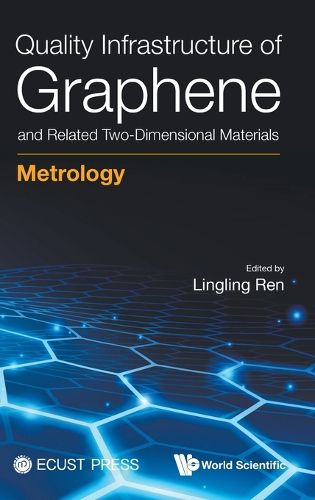Readings Newsletter
Become a Readings Member to make your shopping experience even easier.
Sign in or sign up for free!
You’re not far away from qualifying for FREE standard shipping within Australia
You’ve qualified for FREE standard shipping within Australia
The cart is loading…






Materials metrology, a burgeoning branch of the field, is a subject of intense scrutiny by both researchers and stakeholders. The focal points of their attention are twofold: understanding the objectives of material metrology research and determining effective methods for utilizing its findings. Researchers and stakeholders delve into the intricacies of ensuring traceability of complex units from equipment and maintaining consistency in measurement results across various methods. The application of materials metrology extends to calibrating equipment and/or measurement methods, as well as utilizing critical data for production assessments.Graphene's emergence sparked widespread interest across various fields. The rapid progress of graphene and related two-dimensional materials in both research and industrial applications necessitates robust support from metrology, standards, and conformity assessment, collectively known as national quality infrastructures (NQI). This book, using graphene and related two-dimensional materials as exemplars, explores fundamental concepts and terminologies of metrology and materials metrology, elucidates the technological framework of metrology and standards, and elaborates on various metrological techniques for the structural characterization of graphene and related materials, including Raman spectroscopy, X-ray diffraction, atomic force microscopy, and electron microscopy. Additionally, the book presents techniques for quality evaluation, such as X-ray photoelectron spectroscopy, inductively coupled plasma mass spectrometry, and Fourier transform infrared spectrometry. By leveraging established standard measurement instruments, reference materials, measurement methods, and interlaboratory comparisons, this book endeavors to attain accurate and consistent measurement results.Globally equivalent results can guarantee the quality of graphene products, fostering standardization, mass production, and sustainable advancement within the graphene industry.
$9.00 standard shipping within Australia
FREE standard shipping within Australia for orders over $100.00
Express & International shipping calculated at checkout
Materials metrology, a burgeoning branch of the field, is a subject of intense scrutiny by both researchers and stakeholders. The focal points of their attention are twofold: understanding the objectives of material metrology research and determining effective methods for utilizing its findings. Researchers and stakeholders delve into the intricacies of ensuring traceability of complex units from equipment and maintaining consistency in measurement results across various methods. The application of materials metrology extends to calibrating equipment and/or measurement methods, as well as utilizing critical data for production assessments.Graphene's emergence sparked widespread interest across various fields. The rapid progress of graphene and related two-dimensional materials in both research and industrial applications necessitates robust support from metrology, standards, and conformity assessment, collectively known as national quality infrastructures (NQI). This book, using graphene and related two-dimensional materials as exemplars, explores fundamental concepts and terminologies of metrology and materials metrology, elucidates the technological framework of metrology and standards, and elaborates on various metrological techniques for the structural characterization of graphene and related materials, including Raman spectroscopy, X-ray diffraction, atomic force microscopy, and electron microscopy. Additionally, the book presents techniques for quality evaluation, such as X-ray photoelectron spectroscopy, inductively coupled plasma mass spectrometry, and Fourier transform infrared spectrometry. By leveraging established standard measurement instruments, reference materials, measurement methods, and interlaboratory comparisons, this book endeavors to attain accurate and consistent measurement results.Globally equivalent results can guarantee the quality of graphene products, fostering standardization, mass production, and sustainable advancement within the graphene industry.